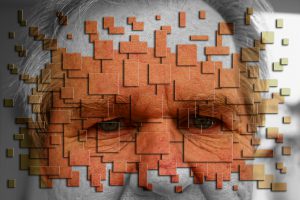 The relationship between writers and the characters they create is often a tangled one. While not all of us are going to become as entangled with our characters as the lead from Ruby Sparks, it’s often hard to separate ourselves from the voices and personalities we create. Every character, after all, is a reflection of our own perspectives, our own selves – whether it be ourselves, the antithesis of ourselves, or a model of someone else based on our point of view of them.
The relationship between writers and the characters they create is often a tangled one. While not all of us are going to become as entangled with our characters as the lead from Ruby Sparks, it’s often hard to separate ourselves from the voices and personalities we create. Every character, after all, is a reflection of our own perspectives, our own selves – whether it be ourselves, the antithesis of ourselves, or a model of someone else based on our point of view of them.
When characters are the product of a single mind, it can be difficult to make them into convincing individuals – to take them further than just being mouthpieces of ourselves, with different hats on. So how can that be done?
It can take a long development to reach that stage. But here’s some general tips to making your characters more than caricatures.
Read as widely as possible
One to get under your belt before you even start. If you just read fantasy, then you’re going to know all about the different types of heroes and anti-heroes that inhabit these words, but what about the fascinating characters that inhabit the murky waters of crime noir? What about the everyday Joes and Janes of general fiction?
Real life is the most powerful source of character traits, borrowing from yourself and the people around you, but also make sure to sample from all across the smorgasbord of fiction and non-fiction. See these characters in action. Take note of how they inhabit the page, and how you might learn from their example. And if you’re writing in a particular genre, like fantasy or crime, read amply from outside that genre. Sometimes your best influences come from less familiar territory.
Character profiles
Not for everyone, but if you haven’t done it before then consider composing a questionnaire for each major character. What they wear. What they’re afraid of. What they carry in their pockets. Even if it seems inconsequential at first, they’re details that might find their way into the story – and more importantly, they tell you about what kind of person they are. The more you know about a character, the more individual presence you can apply to them.
A word of warning here: over-planning and getting lost in adding more and more detail to profiles rather than actually writing the story is a potential hurdle. Just like with planning a plot, know that there’s a time to step away from the planning and actually do the writing.
Dialogue
Always re-read dialogue out loud. Get a sense of the voices of your respective characters and what language they might use. Not every character is going to use the same language, or even have the same vocabulary. Accents and clipped tones (e.g. saying ‘ere instead of here) can be useful, but also easily overdone. Break down any long passages that wind into exposition and backstory, and keep conversations quick and flowing, punctuated with physical cues – your characters are more than talking heads, after all. Everyday speech is always complimented with hand gestures, facial expressions and so on.
Lengthy conversations or group scenes with extensive character interactions can be tricky – it’s a lot to juggle at once to keep characters active, authentic and grounded in the world around them. But it will get easier with experience.
Affect them
After a character is developed enough to be able to step into any scene intact and three-dimensional, the real fun begins. Because for all the grounding a character might have, and however much personality they might have, they can’t be an entity among themselves. They’ve been built up as works of art, but it’s time for them to learn that they’re not untouchable.
Affect your characters. Allow them to react to the world around them. Hurt them, badly if necessary. Force them into a corner where they might reconsider themselves, and their own fundamental traits that you worked so hard on refining – unless they’re the sort of person who ignores all opportunities for self-awareness, in which case see it through to the bitter end. No one is permanently static, so your characters should share the same state of flux as real people.
What do you do?
Everyone’s got their own tricks to refining their own characters. What are yours? Where do your characters come from and how to you develop them from their beginning caricatures into the bundle of traits and quirks that inhabit your work?
Beau Hillier | Editor, page seventeen
